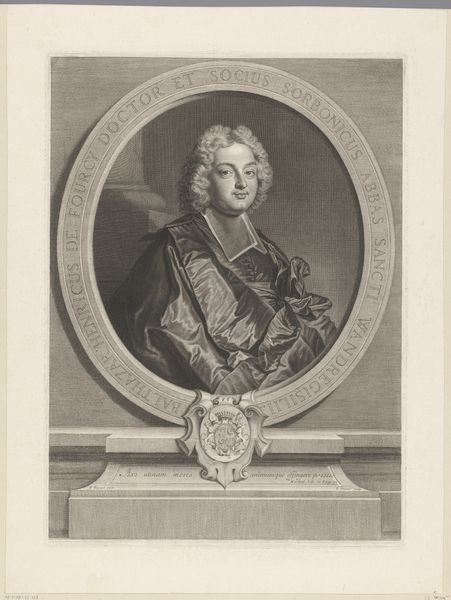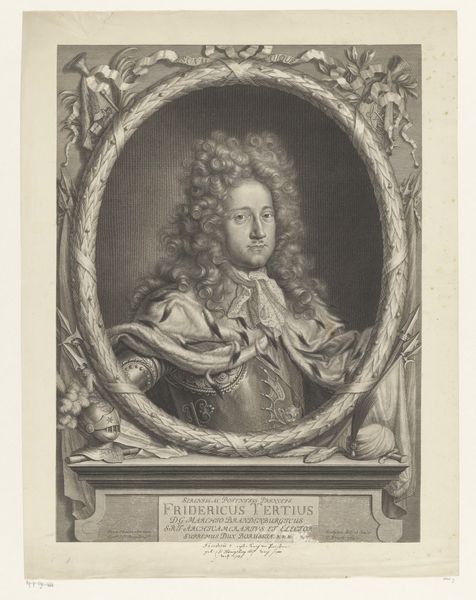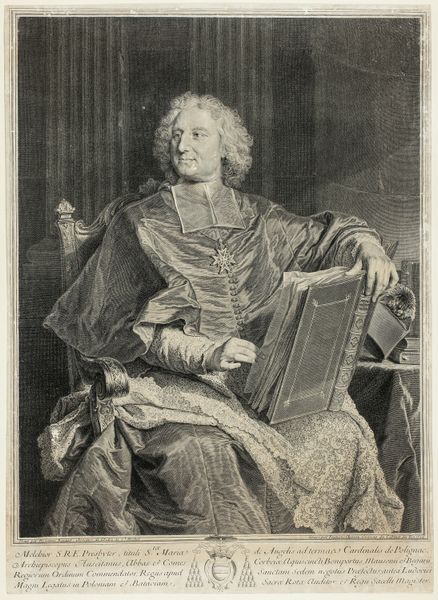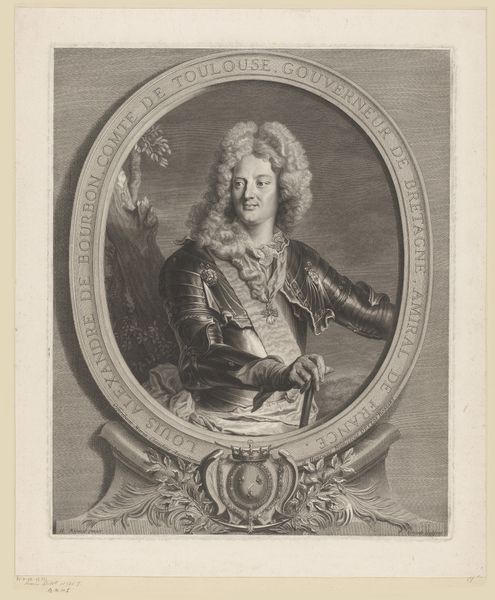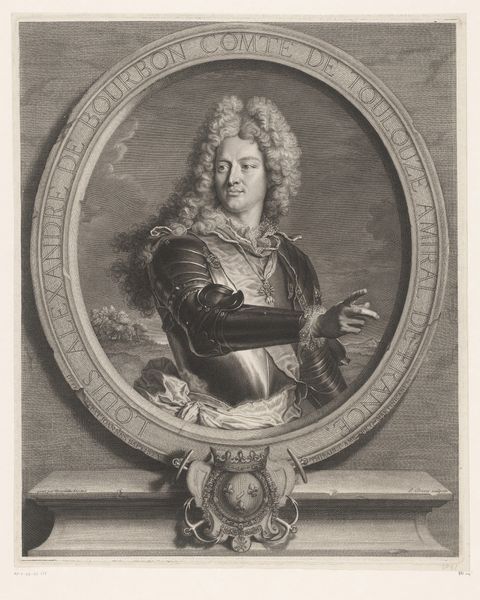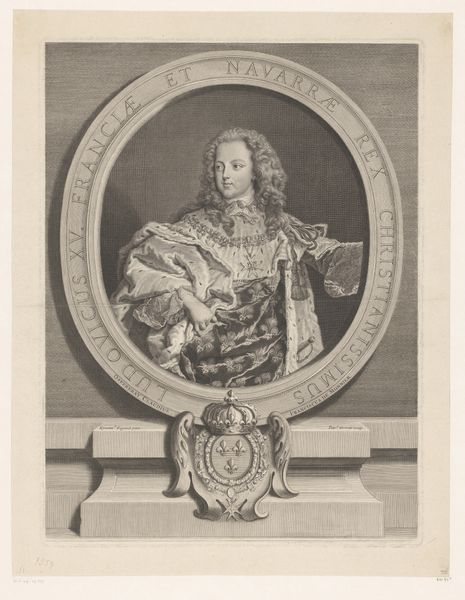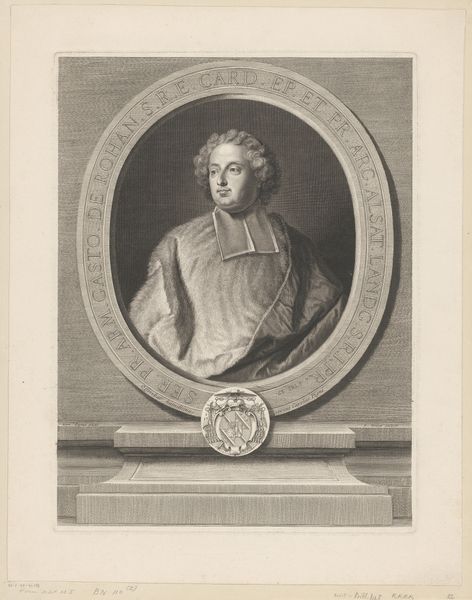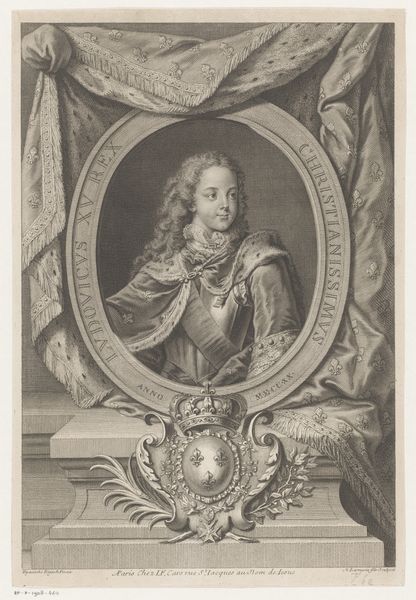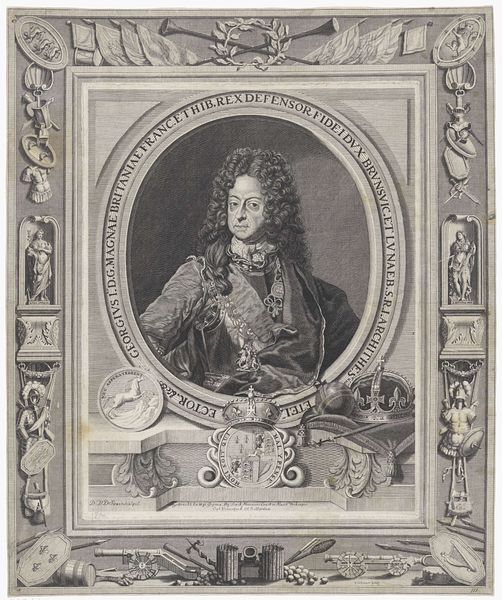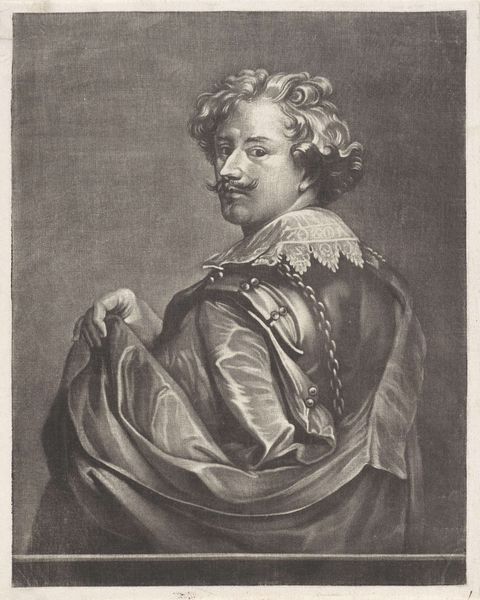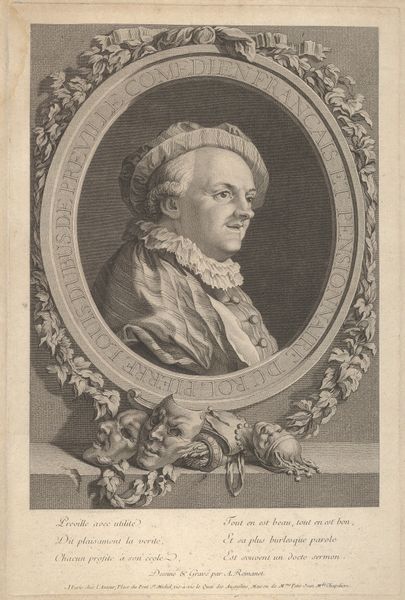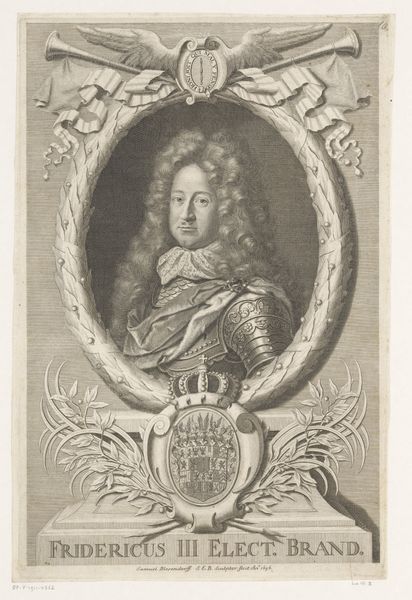
engraving
#
portrait
#
baroque
#
line
#
portrait drawing
#
engraving
#
calligraphy
Dimensions: height 507 mm, width 432 mm
Copyright: Rijks Museum: Open Domain
Curator: The artwork before us is a portrayal of Armand Gaston Maximilien de Rohan, rendered in 1732 by Laurent Cars. It’s an engraving, a delicate dance of line and tone. Editor: My first impression? Power, definitely. But also, a certain fragility. The subject seems both imposing and strangely vulnerable, trapped within this baroque framing device. Curator: Indeed. The portrait resonates with the complexities of the period, when church and state were inextricably linked. De Rohan, a Cardinal, wasn't merely a religious figure; he was a man deeply embedded in the political machinations of 18th-century France. The Rohan family held immense power and influence, and Armand Gaston was part of many scandals and controversies that had the aristocracy in an uproar. Editor: Look at how Cars uses line. The meticulous detail in the face and costume – every curl in the wig, every fold in the fabric meticulously rendered, then juxtaposed against a heraldic frame! It gives depth, literally and figuratively. The lines delineate both form and social stratification. Curator: Exactly. Engraving was a medium that could be reproduced, disseminating images and ideas. The purpose here was not just documentation, but also the manufacturing of authority. His regalia speaks to lineage and to divine privilege. Notice that it places him as central not only within the church but also in secular French governance. Editor: Yet, there's a somber quality about it, would you agree? Perhaps it’s the limited tonal range of the print or even how de Rohan himself has been posed, which evokes melancholy or introspection rather than grandiosity. Curator: It reflects his shifting allegiances, a life marked by personal gain and struggles with royal decree. This tension gives depth and nuance. His narrative extends far beyond the lines etched onto this plate; his engagement and conflicts continue even to the dawn of the revolution. Editor: A compelling visual paradox then – the controlled, refined lines of the engraving capturing the subtle chaos of a life lived within such monumental shifts in the culture. It captures something elemental regarding social unrest and how its implications and machinations often hide in plain sight. Curator: It serves as a valuable object lesson for our times as we try to disentangle identity from privilege and governance.
Comments
No comments
Be the first to comment and join the conversation on the ultimate creative platform.
